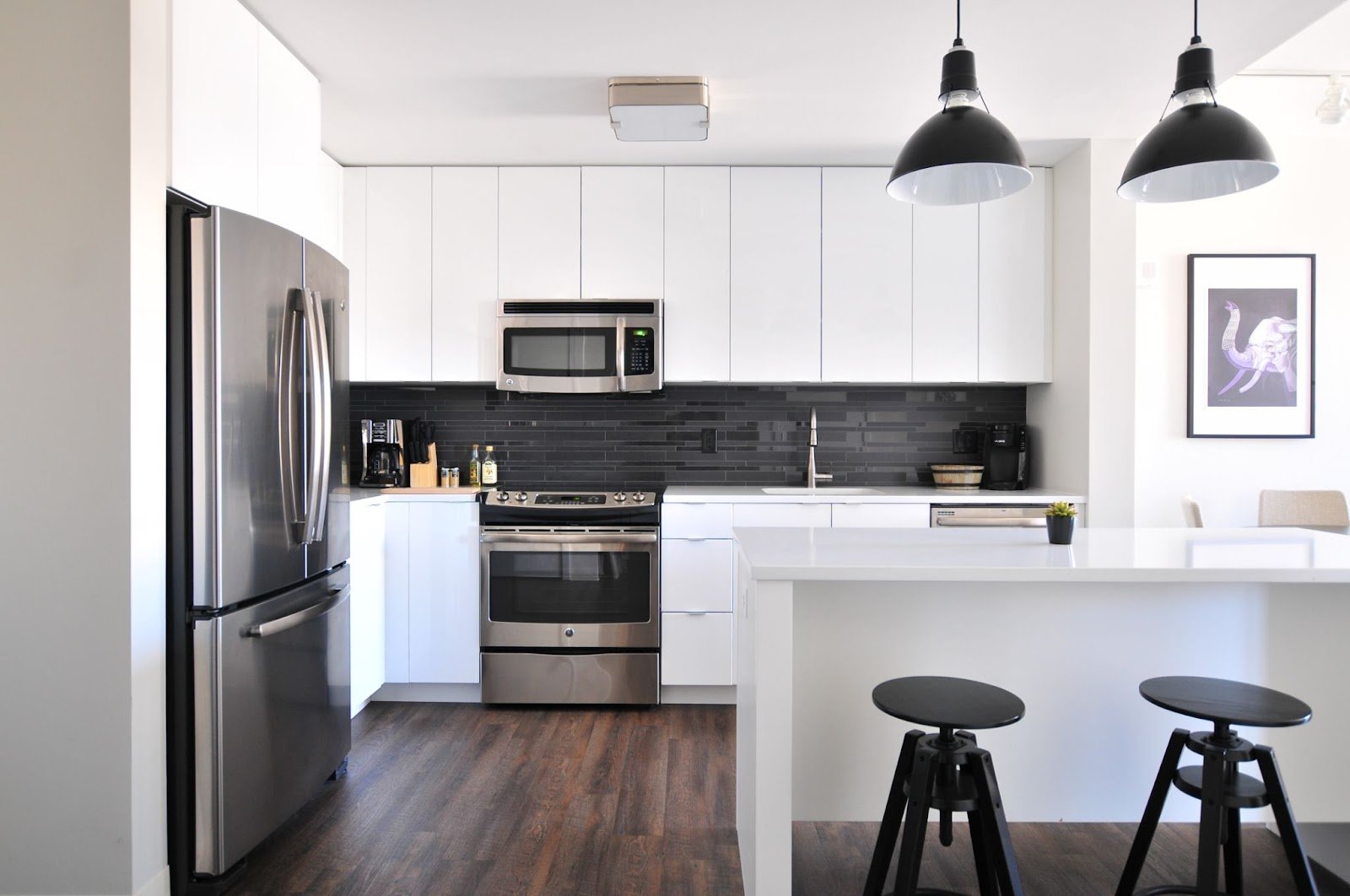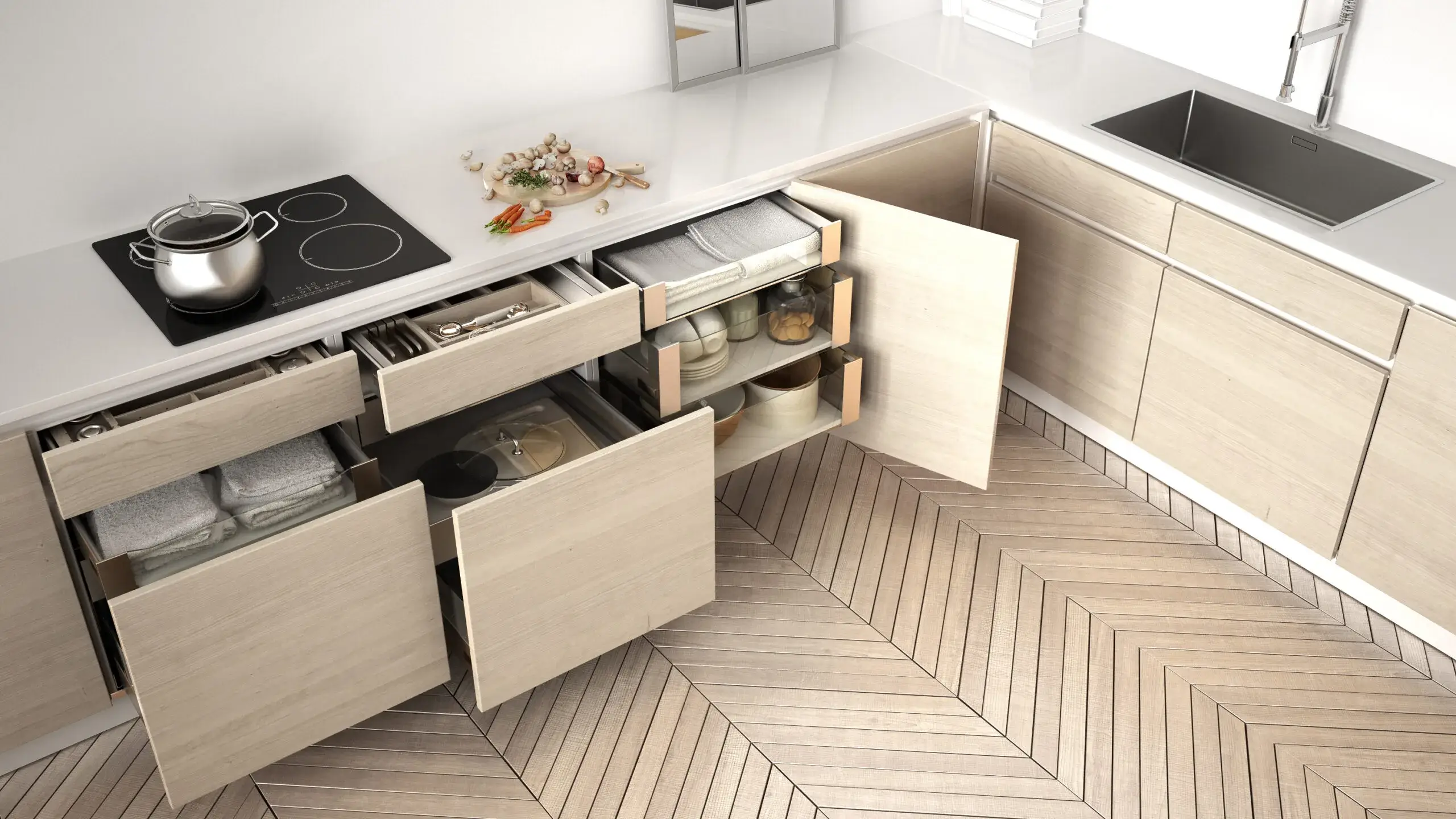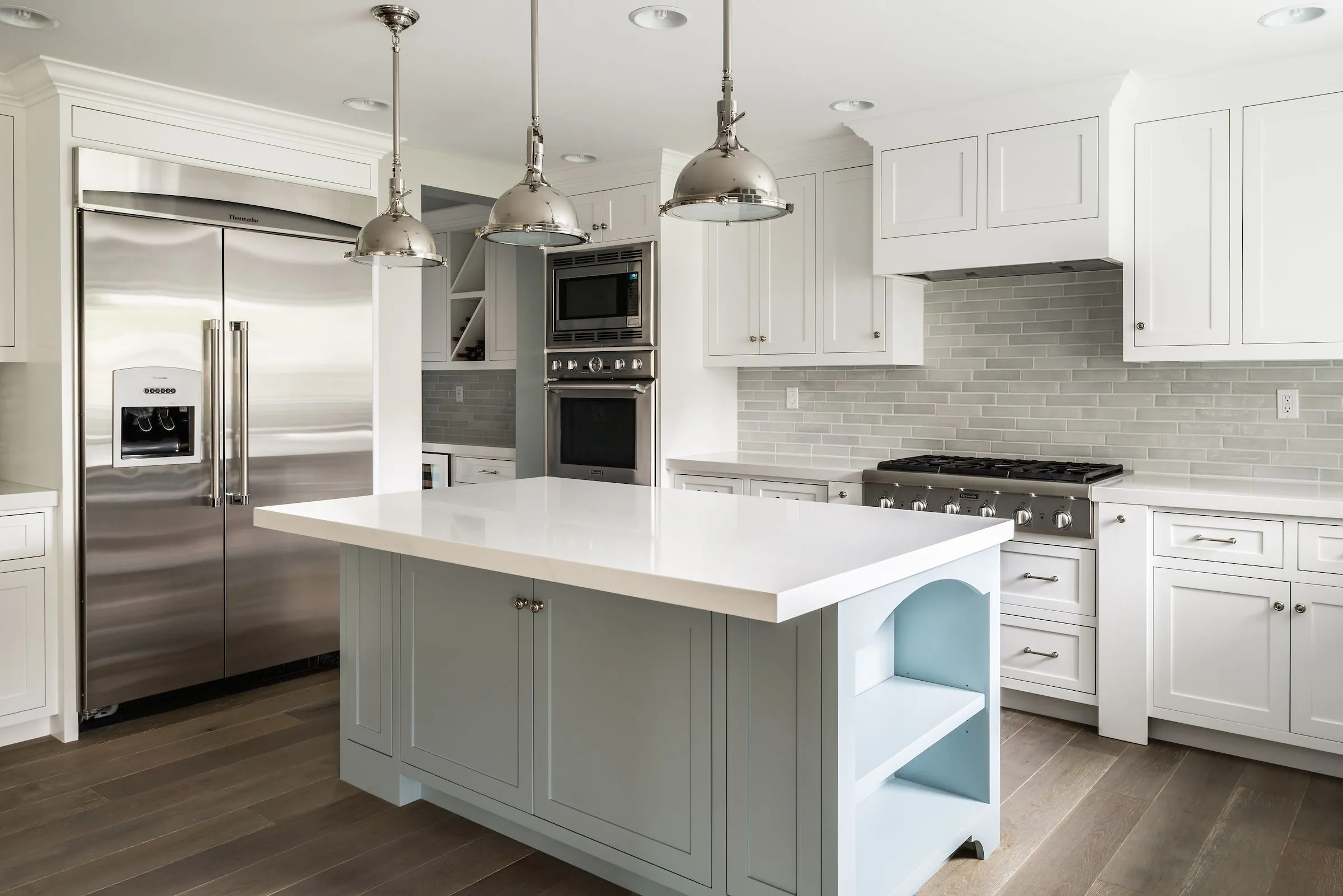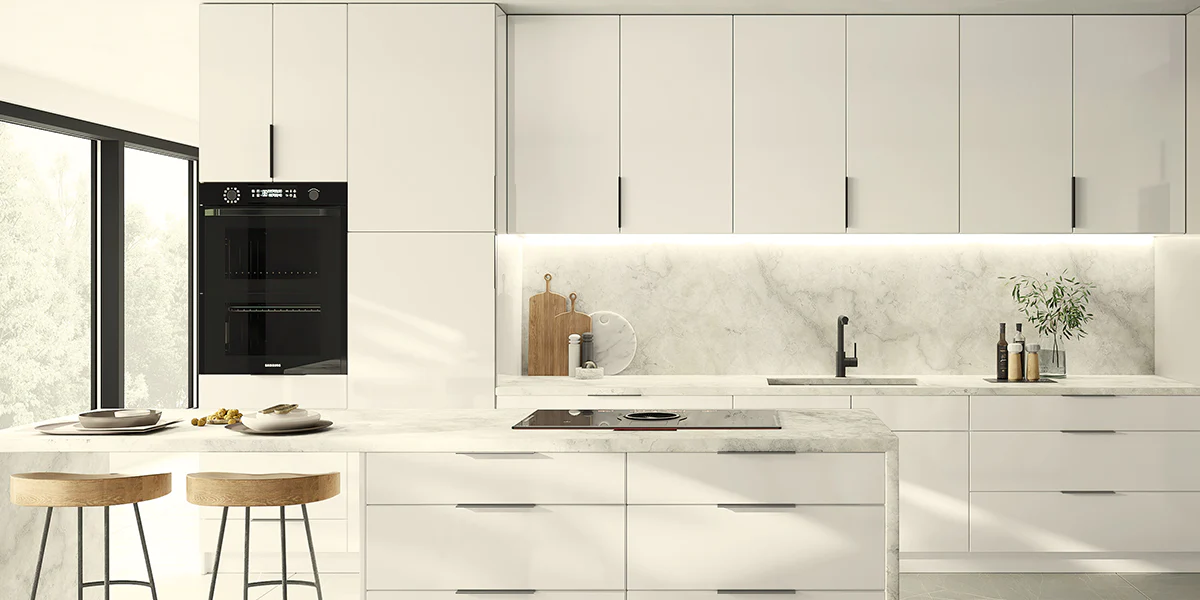The kitchen is often considered the heart of the home, where families gather to cook, eat, and spend quality time together. It’s a space that deserves careful attention and thoughtful design. One of the key elements that can transform your kitchen is the choice of cabinets. Not only do they provide essential storage for your cookware, utensils, and ingredients, but they also contribute significantly to the overall look and feel of the space.
When it comes to buying kitchen cabinets, there are various factors to consider. You need to assess your kitchen space, determine your budget, and identify your style preferences. Understanding the different materials, finishes, and construction options available is also crucial. Additionally, exploring storage and organization solutions, as well as considering other elements like countertops, sinks, and lighting, will help you create a cohesive and functional kitchen design.
In this article, we will provide you with expert tips and insights to help you make an informed decision. At our primary Columbus Cabinet City store located in Columbus, Ohio, we understand the importance of selecting the perfect kitchen cabinets, and we’re here to guide you through the process.
1. Understanding Your Needs: Tips for Buying Kitchen Cabinets
1.1 Assessing Your Kitchen Space
Before you begin searching for kitchen cabinets, it’s crucial to assess your kitchen space. Measure the dimensions of your kitchen, including walls, windows, and doorways. Consider any architectural features or obstacles that might impact cabinet placement. By understanding your kitchen’s layout, you can choose cabinets that maximize both storage and flow.
1.2 Determining Your Budget
Establishing a budget is an essential step in the cabinet-buying process. Consider not only the cost of the cabinets but also any additional expenses such as installation, hardware, and accessories. Determine a realistic budget range and explore options within that range to ensure you find cabinets that meet your needs without overspending.
1.3 Identifying Your Style Preferences
Kitchen cabinets play a significant role in defining the overall style of your kitchen. Decide on the design aesthetic you want to achieve, whether it’s traditional, modern, transitional, or eclectic. Consider factors such as cabinet door styles, finishes, and hardware to create a cohesive look that complements your personal taste and the existing decor in your home.
1.4 Selecting the Right Cabinet Material
Cabinet materials can significantly impact the durability and appearance for buying kitchen cabinets. Common materials include solid wood, plywood, particleboard, and MDF. Each material has its pros and cons in terms of cost, longevity, and resistance to moisture and warping. Choose a material that aligns with your budget, maintenance preferences, and desired aesthetic.
1.5 Exploring Cabinet Door Styles and Finishes
Cabinet doors contribute to the visual appeal of your kitchen. Popular door styles include raised panels, recessed panels, shakers, and corner kitchen cabinets. Consider the level of detail and the overall look you want to achieve. Additionally, explore different finishes such as stained, painted, or laminate options to find the perfect match for your kitchen cabinet style and ambiance.
1.6 Considering Storage and Organization Options
Efficient storage and organization are key elements of well-designed kitchen cabinets. Look for cabinets that offer adjustable shelves, deep drawers, and innovative storage solutions like pull-out trays, spice racks, and utensil dividers. Assess your specific storage needs and prioritize features that will enhance the functionality of your kitchen.
1.7 Evaluating Cabinet Construction and Quality
The construction and quality of kitchen cabinets determine their durability and longevity. Examine details such as the thickness of the cabinet sides, the quality of the joinery, and the strength of the hardware used. Cabinets with solid construction and durable finishes will withstand daily use and provide long-lasting value for your investment.
2. Where to Buy Kitchen Cabinets: Exploring Your Options
2.1 Local Kitchen Cabinet Showrooms
For buying kitchen cabinets, visiting local kitchen cabinet showrooms allows you to see and touch different cabinet options firsthand. You can interact with knowledgeable staff, view displays, and get a sense of the quality and craftsmanship offered by different brands. Showrooms often provide design consultations to assist you in making the right choice for your kitchen.
2.2 Working with Kitchen Designers
Collaborating with kitchen designers can be invaluable when selecting cabinets. These professionals have expertise in creating functional and aesthetically pleasing kitchen spaces. They can help you navigate through various cabinet options, offer design advice, and provide 3D renderings to visualize the final result. A designer’s input can ensure a cohesive and well-executed kitchen design.
2.3 Home Improvement Stores
Home improvement stores offer a wide range of cabinet options at various price points. They provide the convenience of one-stop shopping, allowing you to explore not only cabinets but also other kitchen essentials like countertops, sinks, and appliances. Home improvement store staff can guide you through the selection process and offer cost-effective solutions.
2.4 Custom Cabinet Manufacturers
If you have specific design requirements or unique kitchen space, custom cabinet manufacturers can create cabinets tailored to your needs. They offer a high level of customization in terms of materials, finishes, dimensions, and storage solutions. Custom cabinets provide the opportunity to create a truly one-of-a-kind kitchen that reflects your personal style and maximizes functionality.
2.5 Online Marketplaces and Retailers
Online marketplaces and retailers offer convenience and a vast selection for buying kitchen cabinets. While you won’t have the opportunity to physically examine the cabinets, online platforms often provide detailed product descriptions, customer reviews, and images to assist in the decision-making process. It’s important to research the reputation and reliability of the seller before making a purchase.
3. Best Buy Kitchen Cabinets: Finding the Perfect Fit
3.1 Comparing Cabinet Brands and Reviews
Researching and comparing cabinet brands is crucial to finding the best buy for your kitchen. Look for reputable brands known for their quality craftsmanship and customer satisfaction. Read reviews and testimonials to gain insights into the experiences of other homeowners who have purchased cabinets from these brands.
3.2 Analyzing Pricing and Value for Money
When comparing prices, consider the overall value for money. A slightly higher-priced cabinet may offer superior construction, materials, and warranty, resulting in long-term savings. Evaluate the durability, functionality, and aesthetic appeal of the cabinets in relation to their price to ensure you’re making an informed decision.
3.3 Examining Warranty and Customer Support
Buying kitchen cabinets is a significant investment, and a reliable warranty is essential for peace of mind. Review the warranty terms offered by different manufacturers, paying attention to coverage, duration, and any limitations. Additionally, research the reputation of the manufacturer’s customer support, as prompt and helpful assistance can make a significant difference if any issues arise.
3.4 Seeking Recommendations and Referrals
Reach out to friends, family, or neighbors who have recently installed kitchen cabinets. Ask for their recommendations and gather insights into their experiences. Personal referrals can provide valuable information and help you narrow down your options to trusted cabinet suppliers.
3.5 Visiting Showrooms and Display Models
If possible, visit showrooms or display homes that feature the cabinets you’re interested in. Seeing the cabinets in person allows you to examine their quality, test functionality, and visualize how they will look in your own kitchen. This firsthand experience can help you make a confident decision and ensure you’re satisfied with your purchase.
4. Choosing the Right Kitchen Cabinet Size
4.1 Measuring Your Kitchen Space
Accurate measurements are crucial for selecting the right cabinet size. Use a tape measure to record the dimensions of your kitchen, including walls, windows, doorways, and ceiling height. Note any irregularities or obstacles that may impact the placement or size of the cabinets.
4.2 Determining Cabinet Height and Depth
Consider the height and depth of your cabinets to optimize both storage capacity and accessibility. Standard base cabinets are typically 34.5 inches high, while wall cabinets are commonly 12 to 15 inches deep. However, variations are available to accommodate individual needs and preferences.
4.3 Understanding Standard Cabinet Dimensions
4.3.1 Base Cabinets
Base cabinets are the foundation of your kitchen and provide both storage and countertop space. They come in various widths, typically ranging from 9 to 48 inches. Common configurations include single-door cabinets, double-door cabinets, and drawers.
4.3.2 Wall Cabinets
Wall cabinets are installed above the countertop and provide additional storage space. They are usually 12 to 15 inches deep and come in various widths. Standard heights range from 30 to 42 inches, although taller cabinets can be used to maximize vertical storage. These can be a good fit for outdoor modular kitchens.
4.3.3 Tall Cabinets
Tall cabinets, also known as pantry cabinets, offer vertical storage for items such as brooms, mops, and food supplies. They are generally 84 to 96 inches tall and come in widths ranging from 18 to 36 inches. Tall cabinets can be a valuable addition to any kitchen, providing ample storage space for bulkier items.
4.4 Custom Cabinets
Tailoring Size to Your Needs If your kitchen has unique dimensions or requires specific storage solutions, custom cabinets offer the flexibility to meet your requirements. Working with a cabinet manufacturer or designer allows you to create cabinets that maximize storage while fitting seamlessly into your kitchen space.
4.5 Considering Ergonomics and Accessibility
When choosing cabinet sizes, consider the ergonomic and accessibility aspects. Optimize the placement of frequently used items by placing them within easy reach. Incorporate pull-out shelves or drawers to improve access to the cabinet’s contents, ensuring a comfortable and efficient kitchen experience. Also, look for the best prices on kitchen cabinets.
5. What Buyers Look for in a Kitchen: Beyond Cabinets
5.1 Countertop Materials and Selection
Countertops are an essential element of kitchen design, complementing the cabinets and adding functionality. Explore different countertop materials such as granite, quartz, marble, or laminate. Consider factors like durability, maintenance requirements, and aesthetic appeal to find the perfect match for your cabinets and overall kitchen design.
5.2 Kitchen Sink and Faucet Considerations
The kitchen sink and faucet are daily workhorses, so their functionality and quality are essential. Choose a sink that suits your cooking and cleaning needs, whether it’s a single or double bowl, undermount or top-mount style. Pair it with a faucet that offers convenient features such as a pull-out sprayer or touchless operation.
5.3 Backsplash Options and Design
A well-chosen backsplash can add personality and visual interest to your kitchen. Consider materials like ceramic tile, glass, natural stone, or metal. Explore different colors, patterns, and textures to find a backsplash that complements your cabinets and creates a cohesive look.
5.4 Flooring Materials and Durability
Kitchen flooring should be both durable and visually appealing. Common options include hardwood, ceramic tile, laminate, vinyl, or natural stone. Consider factors such as durability, maintenance requirements, and resistance to moisture and stains. Choose a flooring material that harmonizes with your cabinets and meets the demands of your kitchen’s traffic.
5.5 Lighting Fixtures and Layout
Proper lighting enhances the functionality and ambiance of your kitchen. Install a combination of ambient, task, and accent lighting to create a well-lit space. Consider pendant lights, recessed lighting, under-cabinet lighting, and decorative fixtures. Lighting should be strategically placed to illuminate work areas and highlight the beauty of your cabinets.
5.6 Appliances and Integration
Appliances play a significant role in the overall functionality and design of your kitchen. Select appliances that meet your cooking needs while harmonizing with your cabinet style. Consider integrated or panel-ready appliances that blend seamlessly with the cabinets, creating a streamlined and cohesive look.
5.7 Hardware and Decorative Elements
Cabinet hardware, such as handles and knobs, adds the finishing touch to your kitchen cabinets. Explore different styles, finishes, and materials that complement your cabinet design and overall kitchen aesthetic. Additionally, consider incorporating decorative elements like moldings, trim, or glass inserts to elevate the visual appeal of your cabinets.
6. Kitchen Cabinet Color Choices
When it comes to choosing the color of your kitchen cabinets, the options are virtually limitless. The color you select can significantly impact the overall look and feel of your kitchen space. Whether you prefer a classic and timeless look or a bold and contemporary aesthetic, the right cabinet color can make a dramatic difference.
- Classic White: White kitchen cabinets are a timeless choice that brings a sense of brightness and cleanliness to the space. They create a fresh and airy atmosphere and provide a versatile backdrop for various kitchen design styles.
- Warm Neutrals: Shades of beige, cream, and soft gray offer a warm and inviting look for kitchen cabinets. These neutral tones provide a subtle yet sophisticated backdrop and blend well with different countertop materials and accent colors.
- Elegant Gray: Gray cabinets have gained immense popularity in recent years for their modern and sleek appearance. From light gray to charcoal, gray cabinets add a touch of sophistication and can be paired with a variety of color schemes for a contemporary look.
- Bold Blue: For those looking to make a statement, bold blue cabinets can create a striking and unique focal point in the kitchen. Deep navy or vibrant cobalt blue cabinets bring a sense of depth and personality to the space.
- Timeless Black: Black cabinets exude elegance and sophistication, creating a sleek and dramatic look in the kitchen. When paired with the right lighting and complementary elements, black cabinets can add a touch of luxury and modernity to any style of kitchen.
7. The Best Time for Buying Kitchen Cabinets
7.1 Seasonal Sales and Promotions
For buying kitchen cabinets, keep an eye out for seasonal sales and promotions offered by cabinet retailers. Many retailers offer discounts and special deals during holidays or specific times of the year. Plan your cabinet purchase accordingly to take advantage of these opportunities and save money on your investment. Do look for the best prices on kitchen cabinets.
7.2 Construction and Remodeling Industry Trends
Industry trends can impact the availability and pricing of kitchen cabinets. Stay informed about market trends, including changes in material costs, styles, or popular finishes. Understanding the current industry landscape allows you to make strategic decisions about when to buy and ensure you’re getting the best value for your money.
7.3 Planning Ahead for Construction or Renovation Projects
If you’re planning a construction or renovation project, it’s important to factor in the lead time required for cabinet manufacturing and delivery. Place your cabinet order well in advance to ensure a smooth and timely installation. Early planning also allows you to coordinate with other tradespeople involved in the project.
Conclusion:
Buying kitchen cabinets requires careful consideration of your needs, style preferences, and budget. By following the step-by-step guide provided in this article, you’ll be equipped with the knowledge to make an informed decision. Remember to assess your space, research different options, consider cabinet materials and finishes, and explore additional elements that contribute to a functional and visually appealing kitchen. With the right cabinets in place, you’ll have a kitchen that reflects your personal style and enhances your cooking experience for years to come.
FAQs
What are some tips to choose a kitchen cabinet?
Below are some tips to choose the right kitchen cabinets:
- Assess your kitchen space and consider the layout, measurements, and any architectural features or obstacles that may impact cabinet placement.
- Determine your budget range, including the cost of cabinets, installation, hardware, and accessories.
- Identify your style preferences and choose a design aesthetic that complements your overall kitchen decor.
- Select the right cabinet material based on factors such as durability, maintenance, and desired appearance.
Which quality is best for kitchen cabinets?
The best quality for kitchen cabinets depends on your specific needs and preferences. However, cabinets made from solid wood or plywood tend to offer superior durability and longevity compared to particleboard or MDF. Solid wood cabinets are known for their natural beauty and can be refinished if needed.
What questions to ask when buying kitchen cabinets?
When you are up to purchasing kitchen cabinets, it is always good to ask questions. Below are some questions to ask.
- What is the recommended cabinet material for my specific kitchen requirements?
- Can you provide detailed information about the construction and quality of the cabinets?
- Do you offer any warranties or guarantees for the cabinets?
- Are there customization options available in terms of size, finishes, or storage solutions?
- Can you provide samples or examples of previous installations?
- What is the estimated lead time for manufacturing and delivery?
- Do you offer installation services or can you recommend trusted professionals?
- What is the pricing structure and what does it include (cabinets, hardware, installation, etc.)?
- Are there any ongoing promotions or discounts available?
How do I choose kitchen cabinet size?
To choose the right kitchen cabinet size, follow these steps:
- Measure your kitchen space, including walls, windows, doorways, and ceiling height.
- Determine the desired cabinet height and depth based on your needs and preferences.
- Understand standard cabinet dimensions for base cabinets, wall cabinets, and tall cabinets.
- Consider custom cabinets if your kitchen has unique dimensions or requires specific storage solutions.
- Ensure that the cabinet size allows for easy access and ergonomic use of the kitchen.
What do buyers look for in a kitchen?
Buyers typically look for a combination of functionality, aesthetics, and quality in a kitchen. Some key elements include:
- Ample storage space and efficient organization options.
- Durable and visually appealing cabinets, countertops, and appliances.
- High-quality materials and craftsmanship that ensure longevity.
- A cohesive design that reflects personal style and complements the overall home decor.
- Adequate lighting to enhance the ambiance and functionality of the kitchen.
- Thoughtful layout and flow that allows for easy movement and multitasking.
- Energy-efficient and eco-friendly features for sustainability.
- Integration of modern technology and smart home capabilities.
What is the best time to buy kitchen cabinets?
The best time to buy kitchen cabinets can vary, but there are a few factors to consider:
- Keep an eye out for seasonal sales and promotions offered by cabinet retailers, often during holidays or specific times of the year.
- Stay informed about industry trends as they can impact availability and pricing.
- If you’re planning a construction or renovation project, factor in the lead time required for cabinet manufacturing and delivery.
- Plan ahead to coordinate with other tradespeople involved in the project.
- Ultimately, the best time to buy kitchen cabinets is when you have thoroughly researched your options, compared prices and quality, and found the cabinets that meet your needs and budget.







